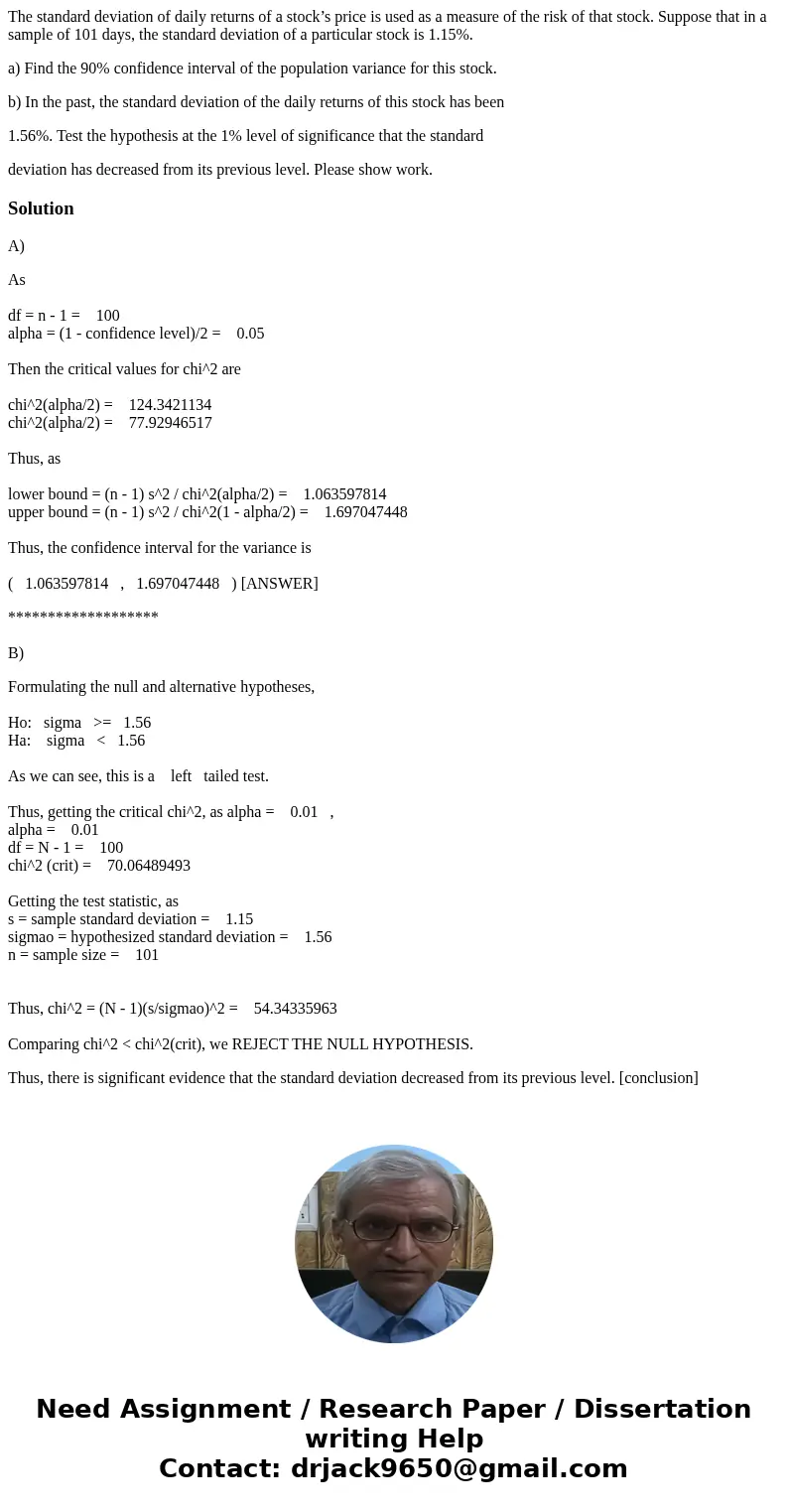The standard deviation of daily returns of a stocks price is
The standard deviation of daily returns of a stock’s price is used as a measure of the risk of that stock. Suppose that in a sample of 101 days, the standard deviation of a particular stock is 1.15%.
a) Find the 90% confidence interval of the population variance for this stock.
b) In the past, the standard deviation of the daily returns of this stock has been
1.56%. Test the hypothesis at the 1% level of significance that the standard
deviation has decreased from its previous level. Please show work.
Solution
A)
As
df = n - 1 = 100
alpha = (1 - confidence level)/2 = 0.05
Then the critical values for chi^2 are
chi^2(alpha/2) = 124.3421134
chi^2(alpha/2) = 77.92946517
Thus, as
lower bound = (n - 1) s^2 / chi^2(alpha/2) = 1.063597814
upper bound = (n - 1) s^2 / chi^2(1 - alpha/2) = 1.697047448
Thus, the confidence interval for the variance is
( 1.063597814 , 1.697047448 ) [ANSWER]
*******************
B)
Formulating the null and alternative hypotheses,
Ho: sigma >= 1.56
Ha: sigma < 1.56
As we can see, this is a left tailed test.
Thus, getting the critical chi^2, as alpha = 0.01 ,
alpha = 0.01
df = N - 1 = 100
chi^2 (crit) = 70.06489493
Getting the test statistic, as
s = sample standard deviation = 1.15
sigmao = hypothesized standard deviation = 1.56
n = sample size = 101
Thus, chi^2 = (N - 1)(s/sigmao)^2 = 54.34335963
Comparing chi^2 < chi^2(crit), we REJECT THE NULL HYPOTHESIS.
Thus, there is significant evidence that the standard deviation decreased from its previous level. [conclusion]

 Homework Sourse
Homework Sourse